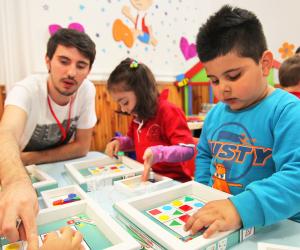
National Teacher Survey
Study Objective
This study is the first publicly available, nationally representative survey of public school teachers in Jordan. It aims to build a foundational understanding of the characteristics of the teaching workforce and provides important insights on teachers’ backgrounds, training, and attitudes, as well the challenges they face in their jobs.
Methodology
This study used a mixed methods approach to capture information about teachers from a range of sources including a nationally representative teacher survey. This information was complemented by additional primary data collection, including a survey of principals and teacher focus groups. Secondary data sources were also consulted; for example, statistics from the Ministry of Education were compared with survey statistics to validate results.
Findings were then compared to international studies to assess how Jordan’s teaching workforce compares with other countries. Furthermore, global research on teacher-related policy was reviewed to draw out findings that can serve to improve teaching and learning in Jordan.
Findings
- Jordan’s public school teachers are mostly female, urban and relatively young.
- Nearly 9 in 10 public school teachers have a Bachelor’s degree or higher.
- Nine in every 10 teachers reported they were happy and that they believed teaching is an honorable profession.
- The most common reason for joining the teaching profession was a passion for teaching – nearly 4 in 10 teachers reported this as their primary motivating factor. Nearly 2 in 10 teachers said their main reason for joining the profession was lack of alternatives, another 30% cited academic circumstances such as the inability to pursue other fields at university, and 10% said the suitability of the profession for women was the primary factor.
- 28% of teachers said they never received training prior to joining the profession, and the majority of those who did receive training reported that their training was around two months or less in length.
- Fewer than half of teachers reported receiving in-service training in the past two years. Informal in-school support may be more common: more than 9 in 10 principals reported meeting with their teachers to discuss lesson plans at least once a month.
- Excluding salary, teachers’ top-reported professional challenges were engaging students and parents and managing heavy workloads.
- There were several differences between male and female teachers’ attitudes: in particular, male teachers were less likely to report a passion for teaching as their primary reason for joining the profession and more likely to say they intend to leave their current teaching position

